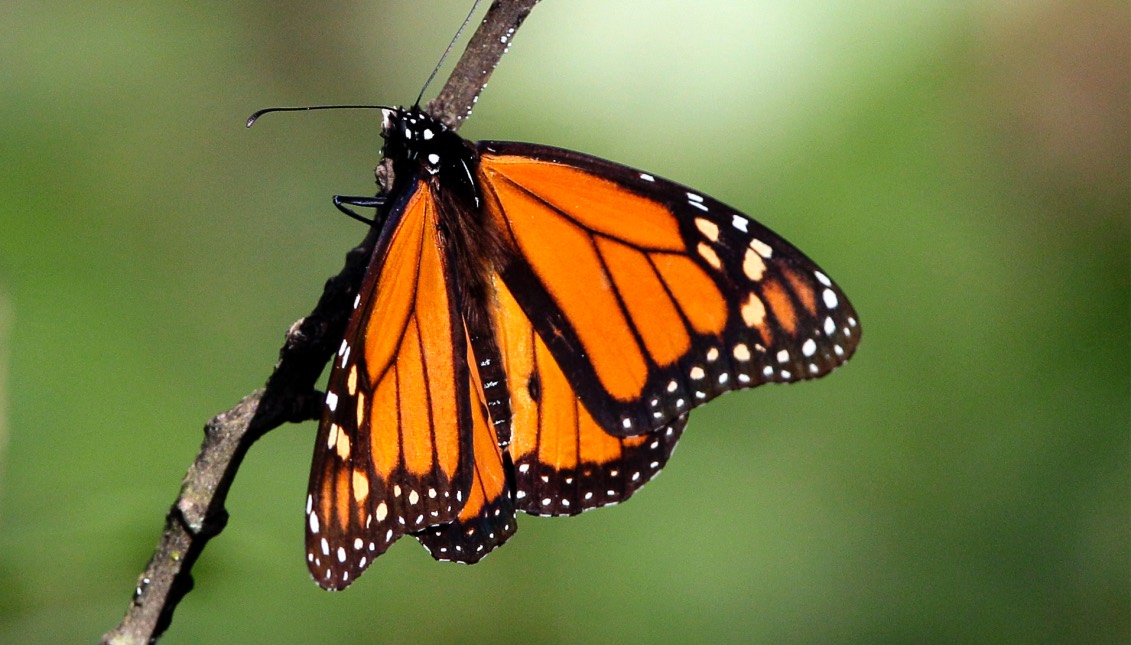
Recovery of monarch butterfly populations observed in Mexican sanctuaries
This is the first time since 2011 that colonies have been detected in all the known hibernation sites outside the Monarch Butterfly Biosphere Reserve.
This is the first time since 2011 that colonies have been detected in all the known hibernation sites outside the Monarch Butterfly Biosphere Reserve
The monarch butterfly considerably increased the area it occupied this season in Mexican sanctuaries, which "could be a sign of recovery" from the minimum levels to which it had plunged over the past two years, the World Wildlife Fund, or WWF, said.
That butterfly species, identified by its large orange wings with black borders, migrates every fall from Canada and the northern United States to Mexico, where during this 2015-2016 season nine different colonies have been observed around the Mexican state of Michoacan.
In all they occupy 4.01 hectares (9.90 acres) of woodland, a big improvement over the 0.67 hectares (1.65 acres) recorded in 2013-2014, which was the smallest area registered in 20 years, the WWF said in a statement.
During its migration, when it flies as far as 4,200 kilometers (2,600 miles) to reach the temperate forests of oyamel firs and Mexican pines, these eye-catching insects face difficulties that sharply diminished the density of its flocks.
Widespread disappearance of the milkweed plan that larvae of the species feed on, changing land-use in the United States, deforestation caused by illegal logging in Mexico and extreme climatic conditions in both countries and in Canada are some of the factors threatening the monarch butterfly.
For that reason, the WWF director in Mexico, Omar Vidal, spoke of the need "to restrict the use of herbicides" that are eradicating milkweed and "to restore the habitat where the monarch reproduces that has been lost over the past few decades" within U.S. territory.
At the same time in Mexico "a permanent surveillance system should be installed to stop the illegal logging in the hibernation sanctuaries, as promised by Presidents (Barack) Obama and (Enrique) Peña Nieto in Toluca in 2014", he said.
This season the largest colony among the monarch's hibernation sites was in El Rosario at the Sierra Campanario Sanctuary in the western state of Michoacan, where the butterflies occupied 1.09 hectares (2.69 acres).
Meanwhile the smallest colony — covering 0.13 hectares (0.32 acres) — was in El Capulin at the Cerro Pelon Sanctuary in Mexico state.
This is the first time since 2011 that colonies have been detected in all the known hibernation sites outside the Monarch Butterfly Biosphere Reserve.
The WWF noted the commitment of indigenous communities, as well as the surveillance efforts and the payment of environmental services by the authorities, to "significantly" reduce clandestine logging in the reserve.
Examples of these efforts are the reforestation of 10,793 hectares (26,649 acres) with 10.7 million native trees and the support provided by sustainable businesses dedicated, among other activities, to wood transformation.
"Now more than ever, Mexico, the United States and Canada cannot lower their guard, but must rather redouble their joint efforts to protect and restore the monarch butterfly's habitat along the entire migration route," Vidal said.










LEAVE A COMMENT:
Join the discussion! Leave a comment.